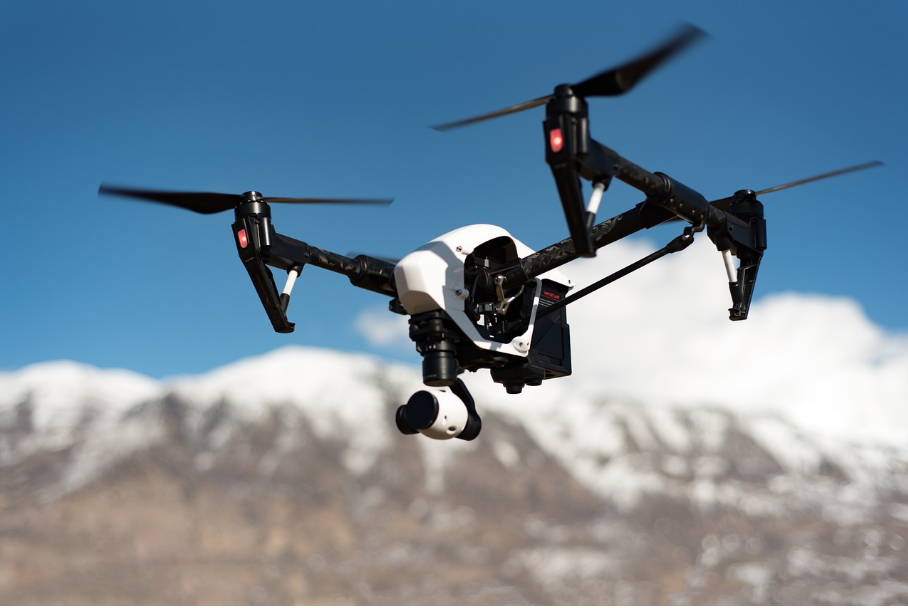I am glad to publish the following guest post by Michael Karp on “9 ways to improve your drone pilot skills”.
########
Piloting a drone is one of the funnest things ever.
There’s nothing quite like controlling a flying piece of technology and having it respond at will.

And with the amount of societal applications available, drones have more meaning in our everyday lives than any consumer remote control vehicle before them.
But for many aspiring pilots, getting their flying skills up to par is a continuous challenge. They struggle with landing, avoiding obstacles, flying safely, and a mountain of other hurdles.
So in this article, I’m going to show you nine ways you can improve your drone pilot skills.
You will learn which type of drone to start off with, how quickly you should advance, an exercise to improve your landing precision, and much more.
Let’s get to it!
1) Take A Training Course
This is one of the fastest ways to get up to speed.
If you want to advance your skills in the shortest time possible, have a pilot (or multiple pilots) teach you the skills they spent months or years learning.
You will absorb a lot of great information from their personal experiences, and it will drastically reduce your learning curve. You can often become a more than proficient pilot within one weekend of instruction.
There are many courses available teaching all sorts of skills and techniques, both in-person and online (if there isn’t one offered near you). Check out this list of over 60 drone training courses to find one that’s right for you.
2) Practice With A Smaller Drone First
The school of thought here goes both ways.
Some say that starting with a small drone is harder, because they’re more difficult to control than higher-end drones. Others say that if you can adequately control a small drone, you’ll have no problem controlling a bigger one.
I’m on the latter side, but for a different reason. I think pilots should start with smaller drones because they’re less expensive. You risk a much smaller investment when you get in the air. We’re talking $10’s rather than $100’s or $1,000’s.
Once you’ve gone through a couple lower-end drones and are able to minimize your crashes, you will know that you can safely move on to a more expensive model.
3) Watch Instructional Videos
Sometimes, it can be tough to learn a skill like drone flying by reading an article. With a video, you can get the instruction and see it in action.
Here are a couple great instructional videos to check out:
https://www.youtube.com/watch?v=sMjs3CtFA3w
4) Take Baby Steps
On your initial flights, it’s tempting to fly straight up 50 feet and start whirl-winding around your local airspace.
Try to avoid this temptation.
Instead, as with any coordinated endeavor, start with building your fundamentals first.
Take baby steps as you progress.
Start by taking off, flying straight up, hovering in place, and landing back down. Move the sticks slowly and steadily until you get a feel for how sensitive they are.
Then practice your yaw (rotation), roll (horizontal movement), and both at the same time to fly in a circle. Continue progressing like this as you get comfortable with each stage of drone flight.
5) Use Landing Targets
Landing targets help you improve your landing precision. This is an extremely important skill for drone pilots, because you sometimes have only a tiny area to safely land your drone.
You want to be confident you can make it into that area.
First, find an open space that is clear of people, animals, and other objects. Then place markers on the ground that vary in distance from each other.
Start from one marker. Take off and fly to another marker. Then land as close to that marker as possible. Then do the same to another marker.
Continue doing this until you can land on each marker almost flawlessly.
When you do find yourself in a sticky landing situation, this is the exercise that will give you the confidence to execute it fearlessly.
6) Practice Flying Around A Point Of Interest
Here’s an example of a drone flying around a point of interest:
You maneuver the drone in a circle around a center of focus.
This skill is great for professional camera drone pilots, because clients will often want a panned shot of their property, construction site, or other area of focus.
This also teaches you how to balance yaw and roll to create an even flight path.
7) Fly Using FPV
FPV stands for First Person View. When you fly using FPV, you get a live feed of what your drone is seeing to a screen in front of you.
This helps many professional pilots get the shots they desire, but it can also help a pilot build their skills.
When using FPV, continually switch from looking at the screen and at the drone itself.
Try to get a feel for how certain types of movements affect the camera’s angle.
Practice flying fast, slow, and while turning different directions. Then use the camera’s view to get a closeup look at what’s happening in the air.
Try taking shots with FPV. Then see if you can get the same shots without it.
8) Buy Drones That Match Your Skill Level
Some pilots buy drones that are way above their skill level.
Your pilot skills don’t just encompass how well you can maneuver a drone, but also how well you know its parts, how to use its features, and how to take advantage of its capabilities.
Technologically advanced drones can be confusing for pilots who are unfamiliar with them. When you’re looking at drones to buy, buy ones that match your skill level.
You will be happier with your purchase, and you will feel a lot more confident upgrading to higher-end models.
9) Practice As Often As Possible
If you really want to improve your pilot skills, you should practice as often as possible.
Start a flight log to track your flights, and set up different days and times each week that are dedicated to building your skills.
If you can carve out a few hours a week to get in the air, you will be able to build your skills in no time.
Over to You
There is no “best” way to become a better drone pilot. Everyone learns differently and at different speeds.
Find the methods that work best for you, and get yourself out there as often as possible.
How have you been learning to fly a drone? Share your methods in the comments below.
 Michael Karp runs Drone Business Marketer, a blog that teaches professional pilots how to grow their businesses.
Michael Karp runs Drone Business Marketer, a blog that teaches professional pilots how to grow their businesses.
Stay tuned on the Personal Drones Blog for the latest quadcopter and multirotor news!
